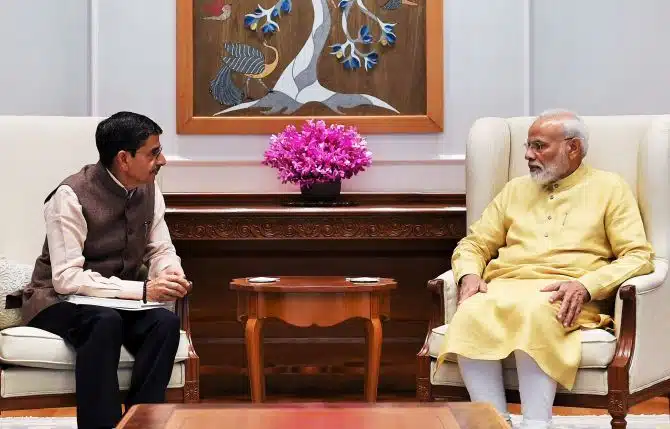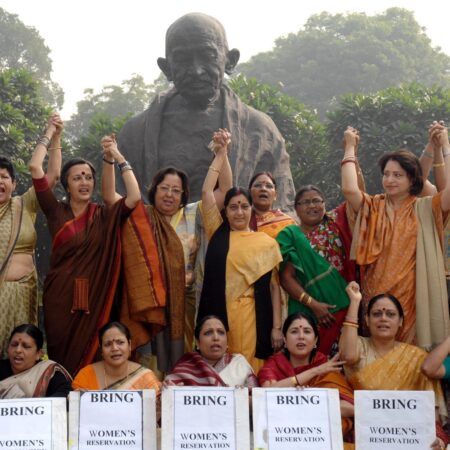As part of its ongoing campaign to remove Tamil Nadu Governor R.N. Ravi from the post of governor, the Dravida Munnetra Kazhagam (DMK) is inviting opposition parties to sign a petition urging President Droupadi Murmu to do so right away. Congress has already joined the cause, but other parties have not yet made it clear where they stand.
Governors in numerous non-BJP-ruled states, including Kerala and Punjab, have voiced their dissatisfaction with the government over several issues, prompting the DMK to call for its ouster. Recent demand for the removal of the governor is necessary; it is unnecessary in a parliamentary democracy.

The Congress has consented to sign the united memorandum after DMK Lok Sabha MP T.R. Baalu urged all opposition parties to do so in a letter on Wednesday. “Governors who uphold their constitutional responsibilities are a dying breed. According to Congress General Secretary Jairam Ramesh, every person recruited since 2014 has been a disgrace and has danced to the tune of “hum do” before that melody has even been played.
The DMK’s letter adds to a rising chorus of complaints against the governor’s office in various States. Sitaram Yechury, the general secretary of the Communist Party of India (Marxist), had also urged like-minded Opposition parties to band together for a protest against the alleged “undemocratic and anti-Constitutional” acts of Governors while speaking at a press conference in the nation’s capital on Monday.
Provision for impeaching the governor
A Governor is chosen by the President and serves “during the pleasure of the President,” as stated in Articles 155 and 156 of the Constitution. The Governor must resign if this pleasure is revoked before the end of the five-year tenure. In practice, the Governor can be nominated and removed by the central government because the President functions with the assistance and counsel of the Prime Minister and the council of ministers.
Therefore, in states, a governor serves as a representation of the Union government. According to Article 163 of the Constitution, the Council of Ministers will typically assist and advise the Governor, except for tasks that call for his discretion.
There is no option for the Governor to be impeached, even though the Governor’s powers and duties are localised to a certain state.

Governor-state relations.
The Governor has some powers granted by the Constitution, despite being envisioned as an apolitical leader who must follow the council of ministers’ recommendations. These powers include the ability to give or withhold assent to a bill passed by the state legislature, approve the calling of the state legislative assembly, and choose which party must be called first to demonstrate its majority.
All these authorities have recently become flashpoints; to give just two examples, the Punjab Governor in September refused to allow a special session of the Assembly for a vote of confidence in the AAP government, and the Maharashtra Governor in 2019 swore in Devendra Fadnavis chief minister despite a hung verdict, only for his government to fall within 80 hours.
What judges have ruled
Since the Governor serves “at the pleasure of the President,” it has frequently been questioned whether the Governor has any tenure security and whether the President is required to justify recalling a Governor.
The Rajasthan High Court ruled in Surya Narain Choudhary v. Union of India (1981) that the Governor had no tenure security and could be dismissed at any time by the President withdrawing his or her pleasure.
The Supreme Court commented on the pleasure theory in BP Singhal v. Union of India (2010). The “at pleasure” notion is supported as having “no limitations or restrictions,” but this “does not dispense with the need for a cause for withdrawal of the enjoyment.”
The removal of the governors of Uttar Pradesh, Gujarat, Haryana, and Goa by the President on May 2, 2004, at the suggestion of the newly elected UPA administration, had been contested in a PIL filed by BJP leader BP Singhal.
Although the President has the authority to remove the Governor from office “at any time without declaring any reason and without offering any opportunity to demonstrate cause,” the Bench concluded that this authority cannot be exercised in a manner that is “arbitrary, capricious, or unreasonable.”

The authority will only be exercised when necessary and only in rare, legitimate situations… A Governor cannot be removed because he disagrees with the ideology and policies of the Union Government or the party in power at the Center. The Bench ruled that his dismissal cannot be justified by the Union Government’s loss of confidence in him.
The Bench ruled that if a terminated Governor seeks judicial review, the Centre will need to defend its judgement because it will be assumed by the court that the President had “compelling and valid” reasons for the removal.
Following this, it was asserted that the central government was pressuring governors to resign on their own rather than recalling them in 2014 when the BJP administration took office. When the NDA administration attempted to force Aziz Qureshi to resign as governor of Uttarakhand, the Supreme Court consented to review his plea in August 2014.
Views of various commissions on the matter of governor removal.
The Administrative Reforms Commission of 1968, the Sarkaria Commission of 1988, and other panels and commissions have all suggested changes to the selection and operation of governors over the years.
M. N. Venkachaliah, a former chief justice, led the National Commission to Review the Working of the Constitution in 2001.
Governors should not be fired before their five-year terms are over, unless “rare and strong” reasons exist, according to the Sarkaria Commission’s recommendations. Additionally, suggestions have been made for an Assembly resolution to remove the Governor from office. None of these, however, have been put into practice.
Read more
–SUPREME COURT ON GROWING HATE SPEECH
–North Korea launches missiles: warn USA and South Korea over military drill.













